L04 Archaeal Cell Structure
一、A Typical Archaeal Cell
Introduction to Archaea
Archaea live in extreme conditions:
- anaerobic swamps
- salt lakes
- acidic hot springs
- deep sea hydrothermal vents
- animal digestive systems
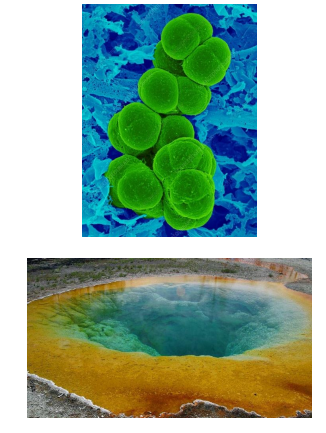
Archaeal taxonomy is currently in a state of flux, but two phyla are well established:
Crenarchaeota(泉古菌门) and Euryarchaeota(广古菌门).
Many features in common with Eukarya
- genes encoding protein: replication, transcription, translation
Features in common with Bacteria
- genes for metabolism
Other elements are unique to Archaea
- unique rRNA gene structure
- capable of methanogenesis
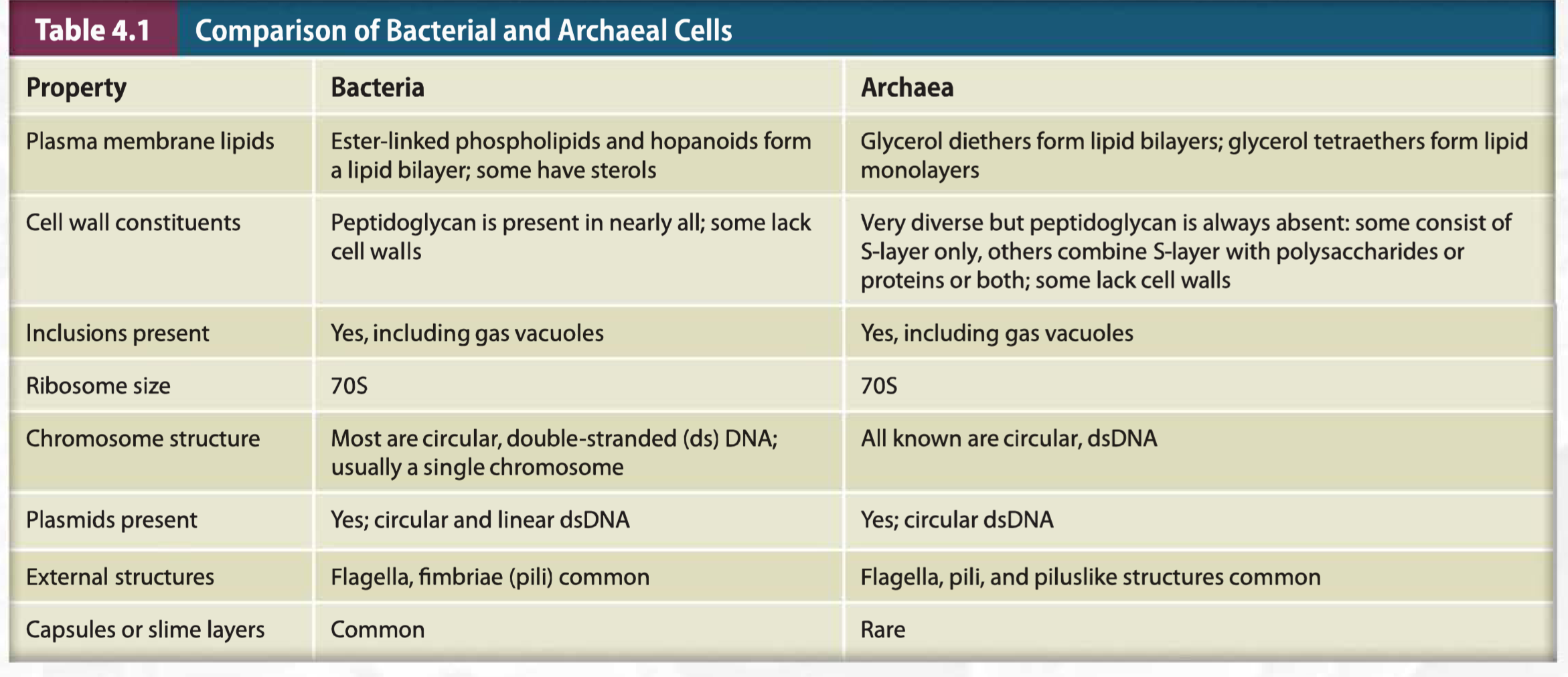
Shape, Arrangement, and Size
Much like bacteria, cocci and rods are common shapes. Other shapes can also exist
- branched/flat shapes
- no spirochetes or mycelial forms yet
Sizes vary (typically 1-2 x 1-5 μm for rods, 1-5 μm in diameter for cocci)
Smallest observed is 0.2 pm in diameter
Largest is a multicellular form that can reach 30 mm in length!
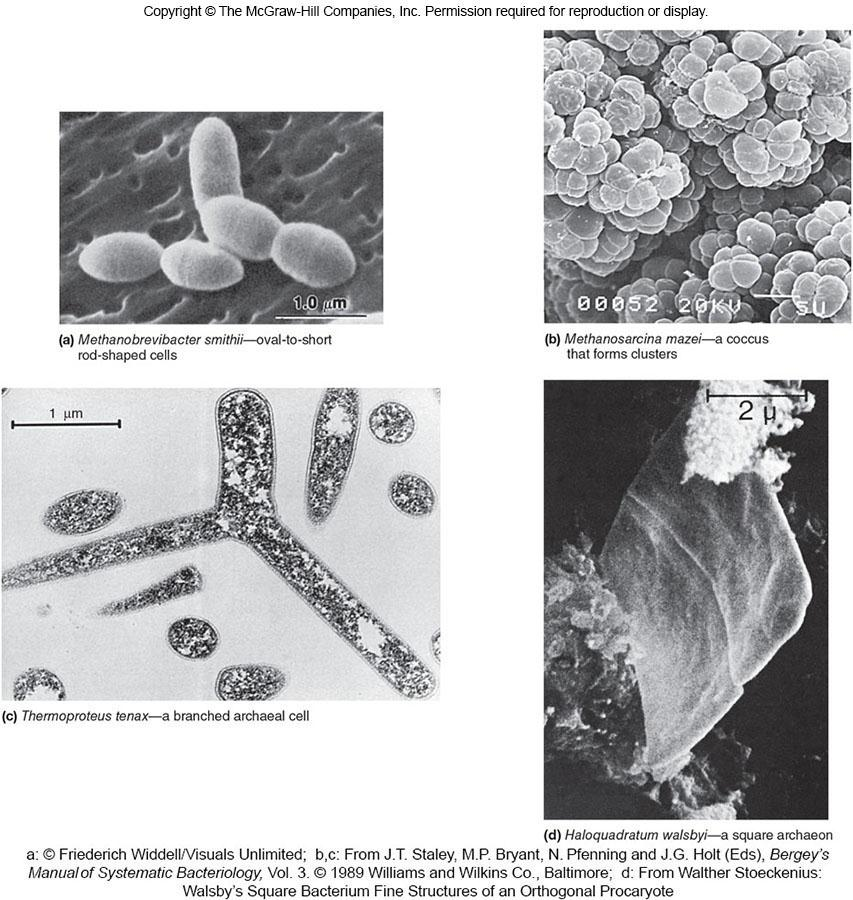
| Property | Bacteria | Archaea |
|---|---|---|
| Plasma membrane lipids | Ester-linked phospholipids and hopanoids form a lipid bilayen some have sterols | Glycerol diethers form lipid bilayers; glycerol tetraetbers form lipid monolayers |
| Cell wall constituents | Peptidoglycan is present in nearly all; some lack cell walls | Very diverse but peptidoglycan is always absent: some consist of S-layer only, others combine $-layer with polysaccharides or proteins or both; some lack cell walls |
| Inclusions present | Yes, including gas vacuoles | Yes, including gas vacuoles |
| Ribosome size | 70S | 70S |
| Chromosome structure | Most are circular, double-stranded (ds) DNA; usually a single chromosome | All known are circular dsDNA |
| Plasmids present | Yes; circular and linear dsDNA | Yes; circular dsDNA |
| External structures | Flagella, fimbriae (pill) common | Flagella, pill, and pllusllke structures common |
| Capsules or slime layers | Common | Rare |
Cell Organization
The archaeal plasma membrane is composed of strikingly different lipids than those found in bacterial membranes; in fact, the unusual lipids were one of the first pieces of evidence to suggest that these microbes are phylogenetically distinct from bacteria
Most ar chaea have a cell wall, but their walls are considerably more diverse than bacterial walls. And archaeal cell walls lack peptidoglycan.
二、Archaeal Cell Envelopes
Cell Envelop
Differ from bacterial envelopes in the molecular makeup and organization
S layer may be only component outside plasma membrane
some lack cell wall
capsules and slime layers are rare
pseudomurein (peptidoglycan-like polymer)
only Ignicoccus(燃球菌属) has outer membrane
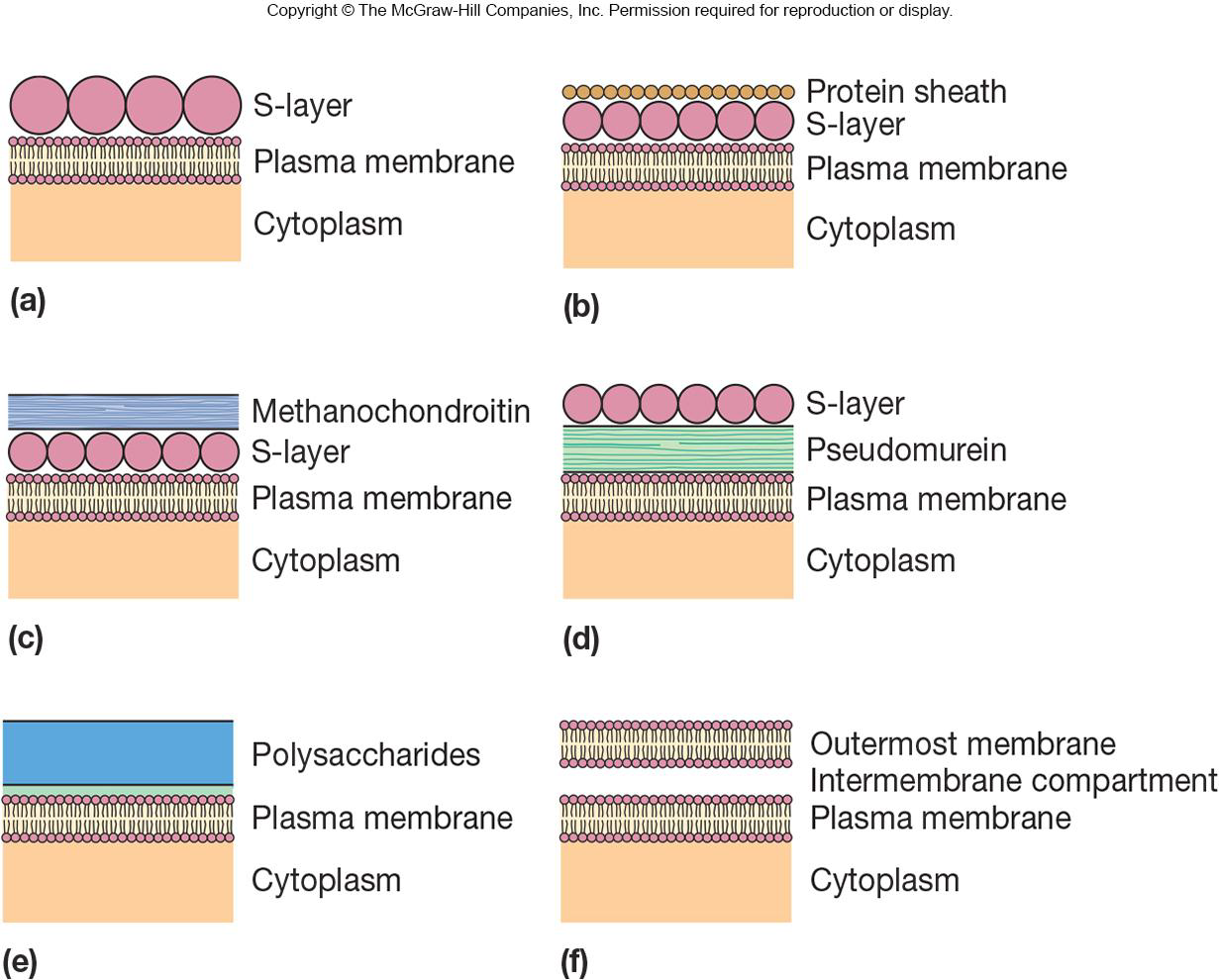
Some archaea have monolayer membranes that function like bilayers. This structural difference is due to the presence of unique lipids in archaeal plasma membranes.
Archaeal cell envelopes also differ in terms of organization. For many archaea, an S-layer is the major, and sometimes only, component of the cell wall. Finally, capsules and slime layers are relatively rare among archaea and thus are not discussed.
S layer may be only component outside plasma membrane
- some lack cell wall
- capsules and slime layers are rare
- pseudomurein (伪胞壁质,peptidoglycan-like polymer)
- only Ignicoccus has outer membrane
1. Pseudomurein
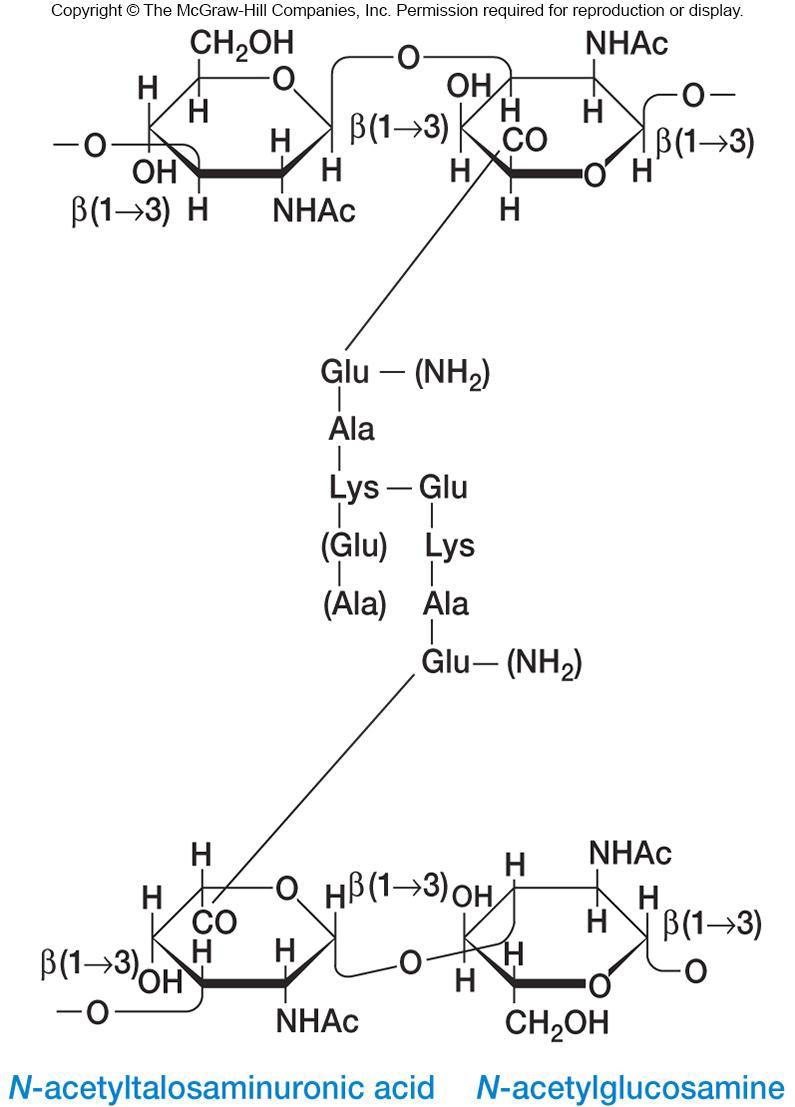
NAT and NAG
Archaeal Plasma Membranes and Nutrient Uptake
1. Membranes
Some have a monolayer structure instead of a bilayer structure
Composed of unique lipids
- isoprene units (five carbon, branched)
- ether linkages rather than ester linkages to glycerol
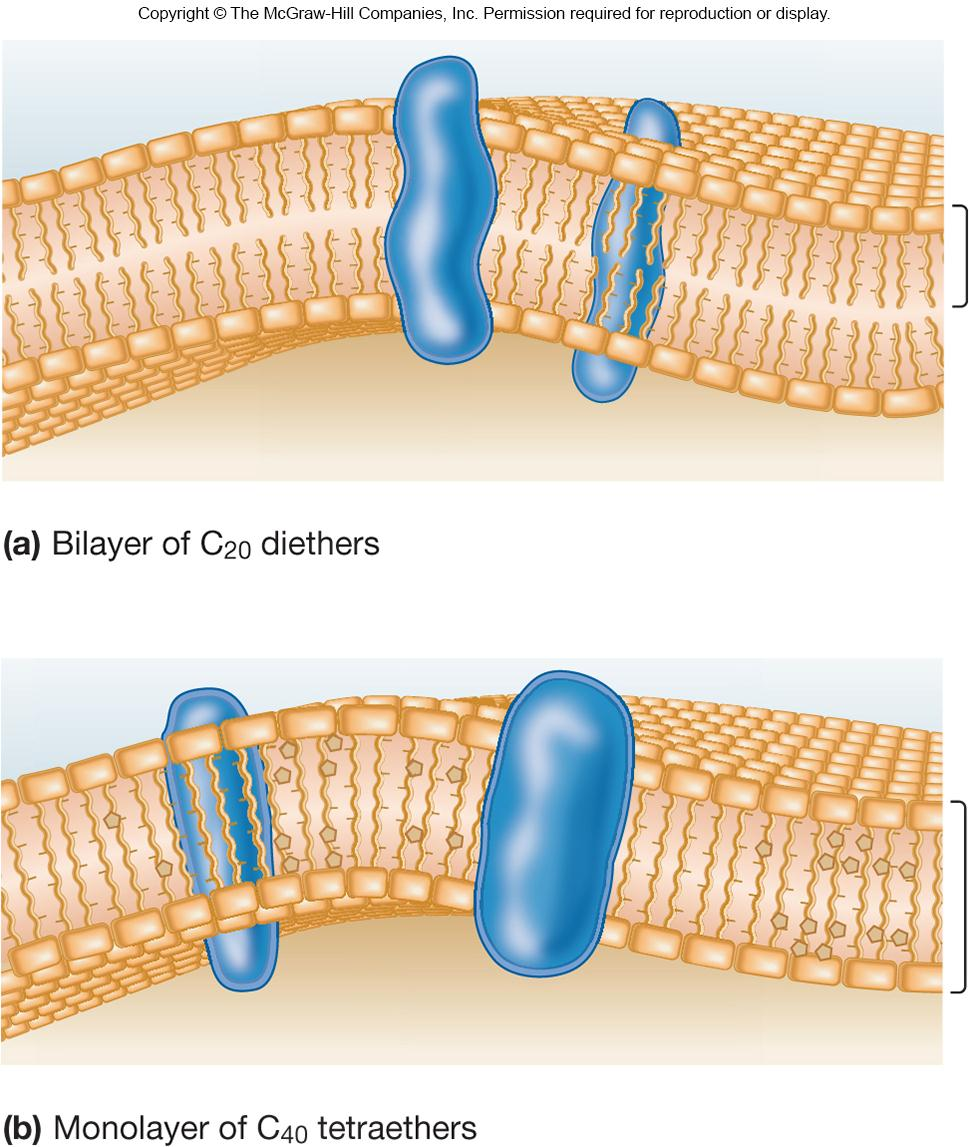
Archaeal membranes are composed primarily of lipids that differ from bacterial and eukaryotic lipids in two ways:
- First, they contain hydrocarbons derived from isoprene units-five-carbon, branched molecules (figure 4.3). Thus the hydrocarbons are branched as shown in figure 4.4. This affects the way the lipids pack together, which in turn affects the fluidity of the membrane and its permeability.

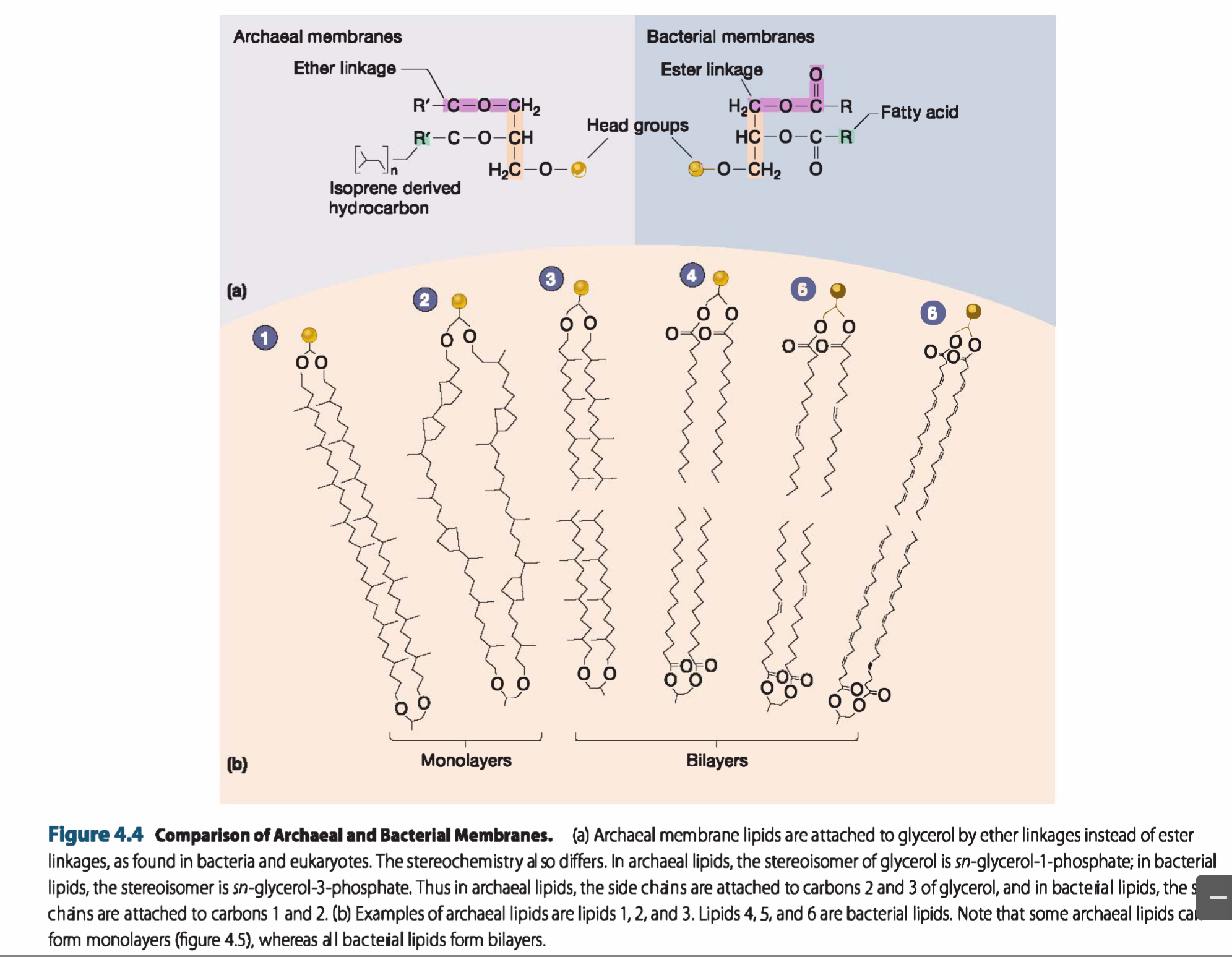
Some have a monolayer structure instead of a bilayer structure
•Composed of unique lipids
- isoprene(橡胶基质) units (five carbon, branched)
- ether linkages(醚键) rather than ester linkages(酯键) to glycerol
2. Nutrient Uptake
Archaeal cells use many of the same mechanisms for nutrient uptake exhibited in bacteria
- facilitated diffusion
- active transport (primary and secondary)
•No group translocation mechanisms have yet been discovered in archaea,
三、Archaeal cytoplasm
古菌与细菌的细胞质结构非常相似:
- lack of membrane-enclosed organelles
- May contain inclusion bodies (e.g. gas vesicles for buoyancy control)
- All the usual components
- ribosomes
- nucleoid region
- inclusion bodies
Ribosomes
古菌的核糖体具有细菌的特征,同时也具有一些真核细胞的特点:
Entire ribosome
- bacterial/archaeal ribosome = 70S
Bacterial and archaeal ribosomal RNA
- 16S small subunit
- 23S and 5S in large subunit
- but archaea have additional 5.8S (also seen in eukaryotic large subunit)
Proteins vary(古菌与细菌的蛋白质不尽相同):
archaea more similar to eukarya than to bacteria
The Nucleoid 拟核
- Usually not membrane bound (few exceptions)
- Usually 1 (some evidence for polyploidy in some archaeons)
- Supercoiling and nucleoid proteins (histones, Alba(脑白质), condensins) aid in folding
四、Archaeal external structures
Pili
- not well understood as of yet
- some composed of pilin protein
- have a central lumen similar to bacterial flagella, but not bacterial pili
- may be involved in archaeal adhesion mechanisms
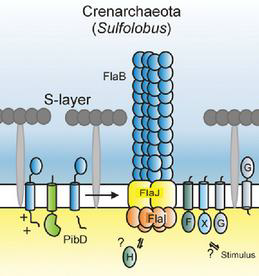
Flagella
Flagella thinner than bacteria’s
- More than one type of flagellin protein
- Flagellum are not hollow
- Hook and basal body difficult to distinguish
- Growth occurs at the base, not the end
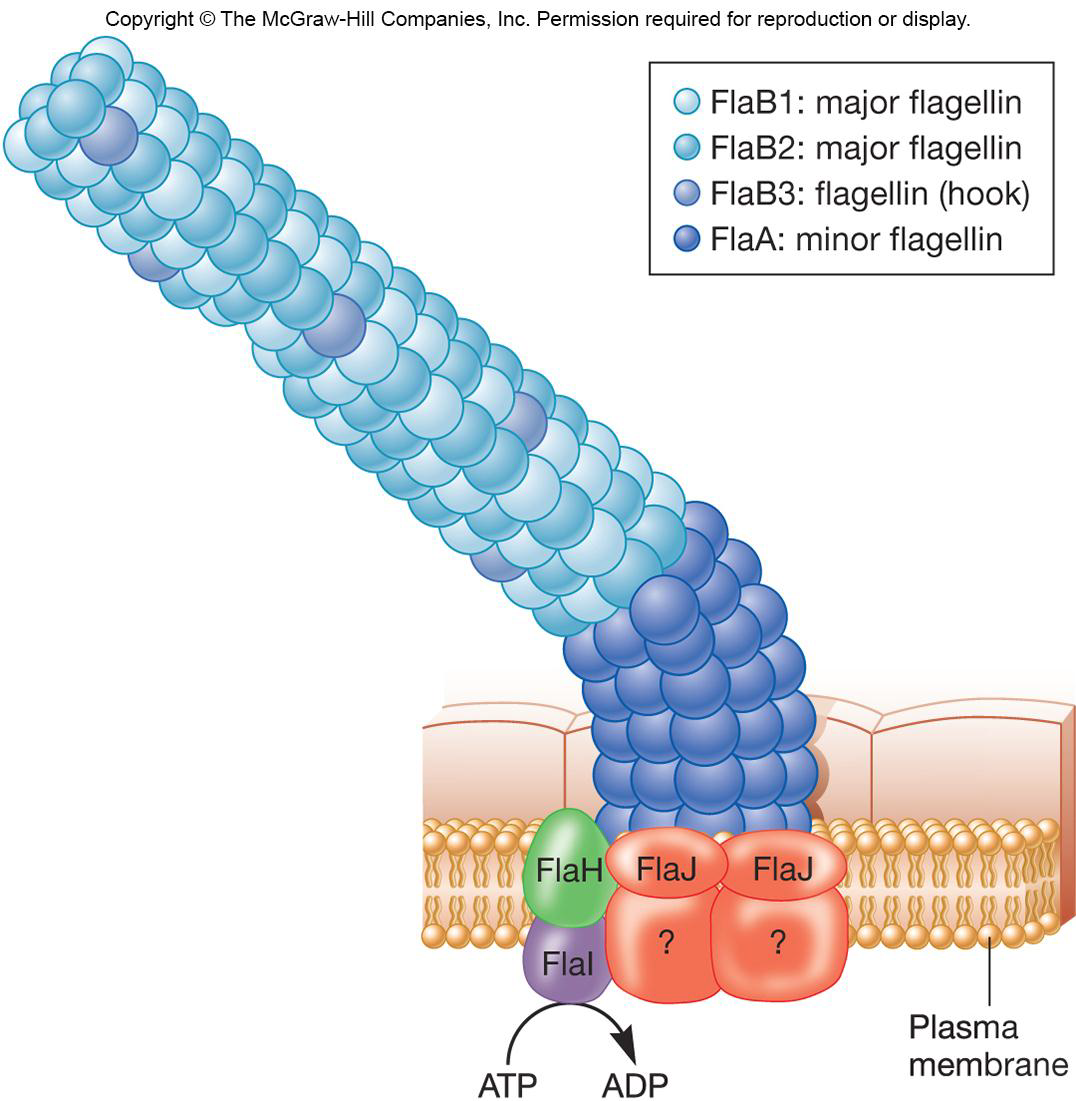
Cannulae(插管、套管)
hollow, tubelike structures on the surface of thermophilic archae in the genus Pyrodictium(热网菌属)
function is unknown
may be involved in formation of networks of multiple daughter cells
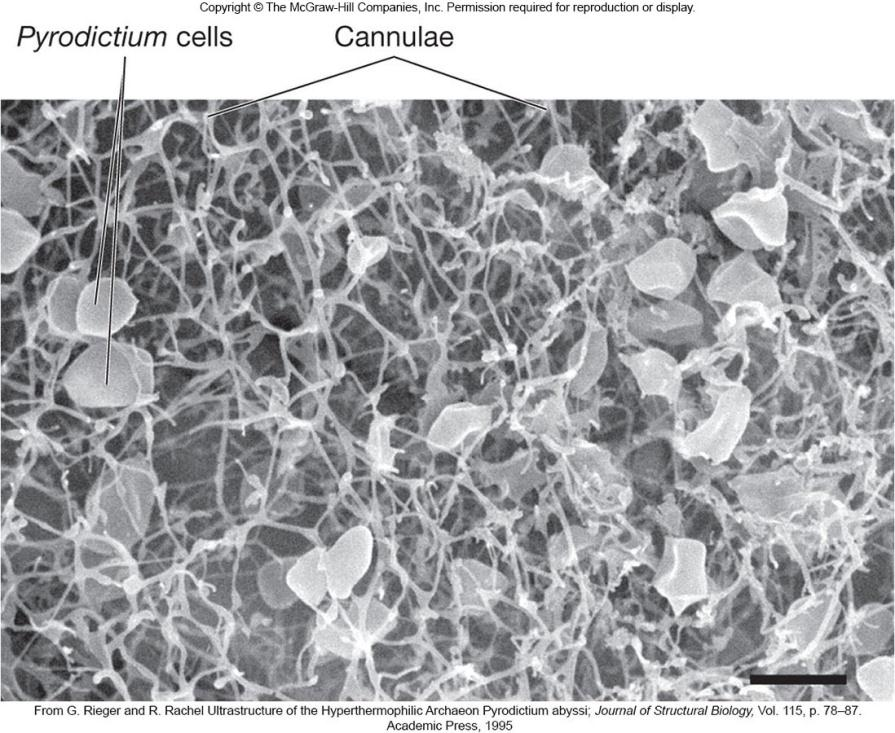
Hami
- not well understood
- ‘grappling hook’ appearance
- involvement in cell adhesion mechanisms?
